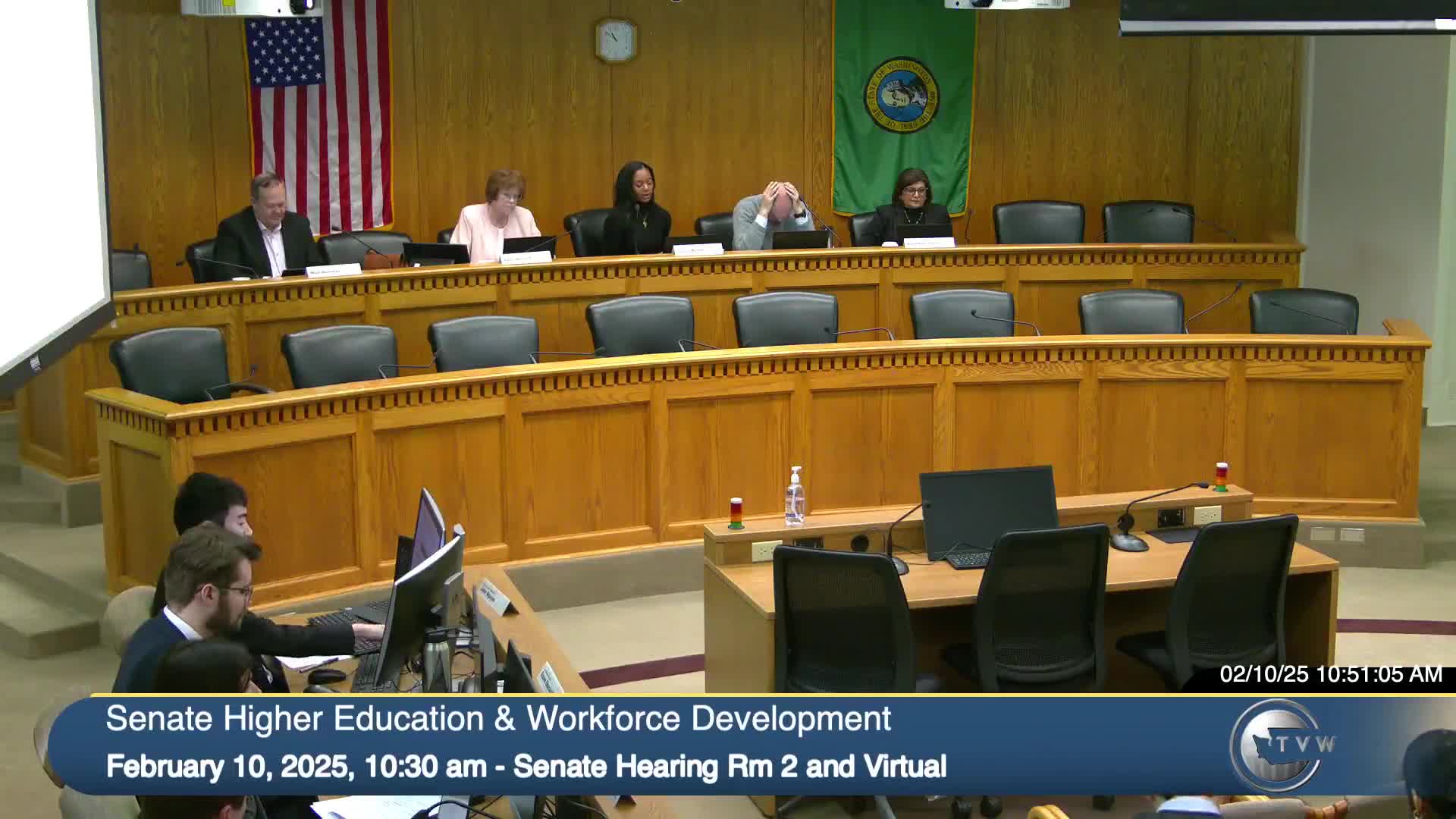Standishkoin highlights Washington's private colleges' role in boosting student completion rates
February 10, 2025 | Higher Education & Workforce Development, Senate, Legislative Sessions, Washington
This article was created by AI summarizing key points discussed. AI makes mistakes, so for full details and context, please refer to the video of the full meeting. Please report any errors so we can fix them. Report an error »

In a pivotal meeting of the Senate Higher Education & Workforce Development Committee, key leaders from Washington's private not-for-profit colleges gathered to discuss their vital role in shaping the state's educational landscape. Terry Standishkoin, President and CEO of Independent Colleges of Washington, along with Dr. Andrew Sund, President of Heritage University, highlighted the pressing need for increased post-secondary education access in Washington.
Standishkoin emphasized that the state faces a significant challenge in ensuring that students and adults without credentials can pursue higher education, which is increasingly necessary for job readiness. He pointed out that Washington's goal of achieving a 70% credential attainment rate remains unmet, particularly among marginalized communities. The data presented underscored the importance of private colleges in bridging this gap, as they serve a diverse student body, including many first-generation college students.
The discussion also spotlighted the impact of state-funded programs like the Washington College Grant and College Bound, which have enabled many students to attend college. Standishkoin noted that private colleges are strategically located within 50 miles of 82% of Washington residents, providing crucial geographic access to education.
With a completion rate exceeding 80%, significantly higher than the national average of 62%, these institutions are making substantial contributions to the state's workforce. Standishkoin detailed how their programs align with the state's job market needs, particularly in fields such as computer science, nursing, and education.
The meeting also addressed the support systems in place for students, including early alert systems that help identify those in need of academic or personal assistance. These initiatives aim to ensure that students not only enroll but also successfully complete their degrees.
As the meeting concluded, Standishkoin shared the economic impact of these institutions, noting that they collectively contribute approximately $2.2 billion to the state's economy and employ around 8,000 individuals directly. This economic footprint underscores the integral role that private colleges play not just in education, but in the broader community and economy of Washington.
The discussions at this meeting reflect a commitment to enhancing educational access and success, with a clear focus on collaboration between private and public institutions to meet the evolving needs of Washington's workforce.
Standishkoin emphasized that the state faces a significant challenge in ensuring that students and adults without credentials can pursue higher education, which is increasingly necessary for job readiness. He pointed out that Washington's goal of achieving a 70% credential attainment rate remains unmet, particularly among marginalized communities. The data presented underscored the importance of private colleges in bridging this gap, as they serve a diverse student body, including many first-generation college students.
The discussion also spotlighted the impact of state-funded programs like the Washington College Grant and College Bound, which have enabled many students to attend college. Standishkoin noted that private colleges are strategically located within 50 miles of 82% of Washington residents, providing crucial geographic access to education.
With a completion rate exceeding 80%, significantly higher than the national average of 62%, these institutions are making substantial contributions to the state's workforce. Standishkoin detailed how their programs align with the state's job market needs, particularly in fields such as computer science, nursing, and education.
The meeting also addressed the support systems in place for students, including early alert systems that help identify those in need of academic or personal assistance. These initiatives aim to ensure that students not only enroll but also successfully complete their degrees.
As the meeting concluded, Standishkoin shared the economic impact of these institutions, noting that they collectively contribute approximately $2.2 billion to the state's economy and employ around 8,000 individuals directly. This economic footprint underscores the integral role that private colleges play not just in education, but in the broader community and economy of Washington.
The discussions at this meeting reflect a commitment to enhancing educational access and success, with a clear focus on collaboration between private and public institutions to meet the evolving needs of Washington's workforce.
View full meeting
This article is based on a recent meeting—watch the full video and explore the complete transcript for deeper insights into the discussion.
View full meeting
